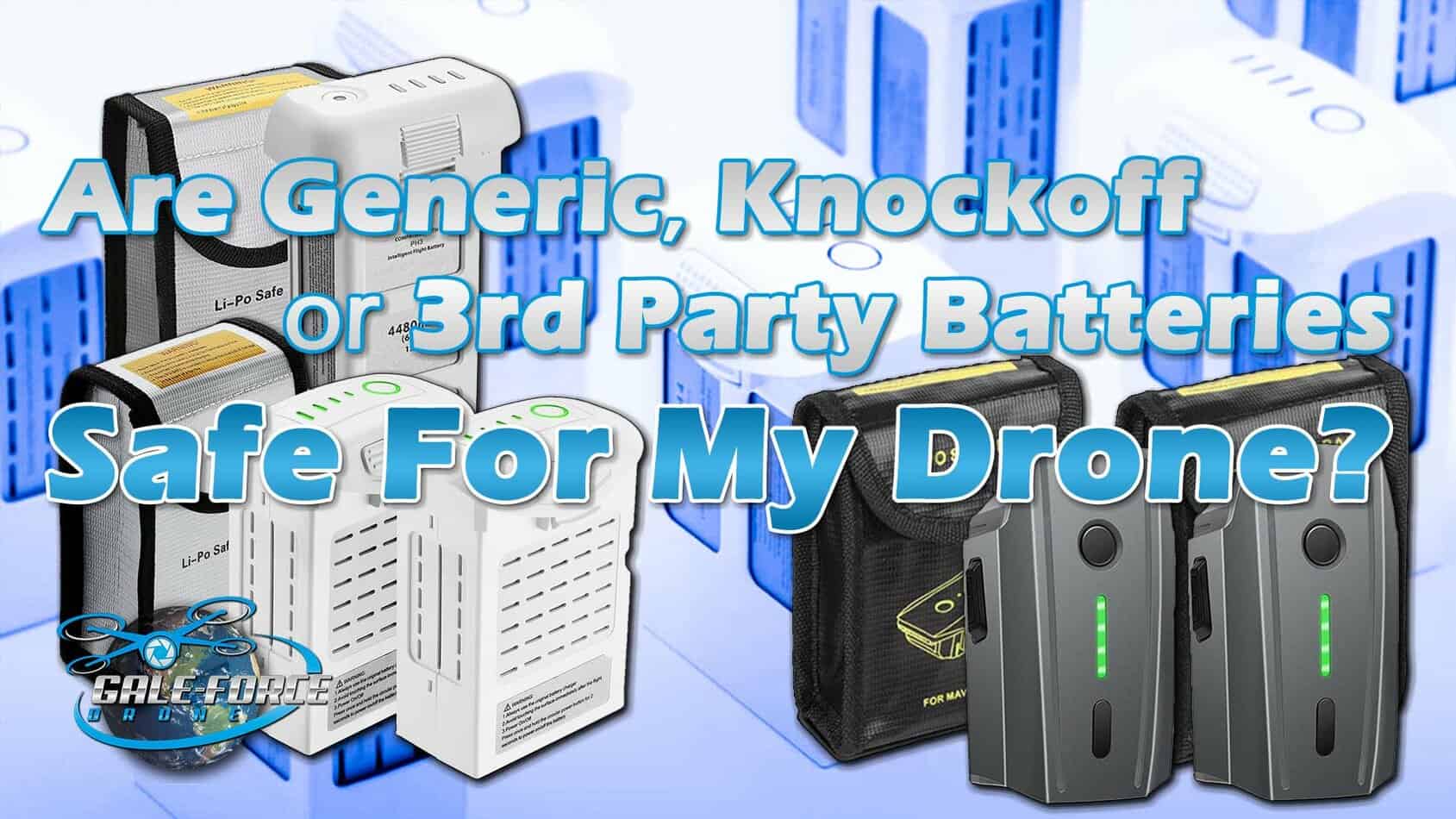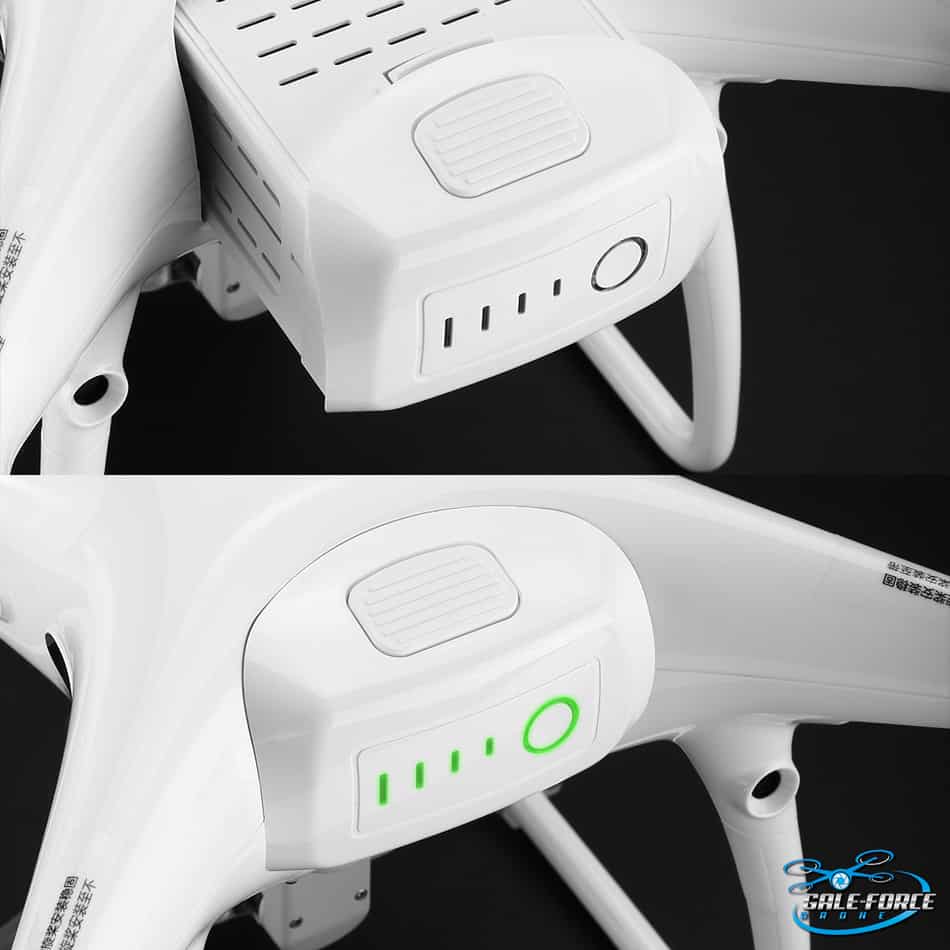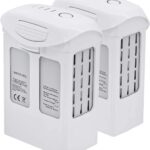Yes, there are many generic, knockoff or 3rd party batteries to choose from that are safe for our drones. If you are looking for replacement or additional batteries for your drone, there are companies that specialize in manufacturing batteries that offer OEM spec batteries. Most are less expensive than the OEM battery, but perform exactly the same as your brand name battery.

How Do I Research Replacement Drone Batteries?
 I have been doing some research on replacement batteries for my DJI Phantom 4 Pro drones. As a standard practice, I keep 4 to 6 batteries per drone on hand so whether I am flying a commercial project, or flying recreational, I like knowing I have a 1 to 1.5 hours of battery to work with. With the retail cost of DJI’s OEM battery at $169, I am interested in finding comparable batteries at a lower cost. At a quick glance, I quickly find several options for 3rd party or aftermarket batteries at half the DJI price.
I have been doing some research on replacement batteries for my DJI Phantom 4 Pro drones. As a standard practice, I keep 4 to 6 batteries per drone on hand so whether I am flying a commercial project, or flying recreational, I like knowing I have a 1 to 1.5 hours of battery to work with. With the retail cost of DJI’s OEM battery at $169, I am interested in finding comparable batteries at a lower cost. At a quick glance, I quickly find several options for 3rd party or aftermarket batteries at half the DJI price.
I should mention that with my background in IT consulting, when I research products, I do not include the manufacturers internal performance data in my analysis. Obviously, manufacturers will spin their products in the best light and will only present the most positive information. I tend to find the best non-biased and objective data from forums and review boards, and utilize YouTube to get real world user experience. Then once I have narrowed a technology down to a couple of favorites, I then visit the manufacturer website and analyze specifications of the particular product I am researching. I am no rocket scientist, nor do I claim to be an expert on anything, but my research methods over the course of my 26+ years in IT, have proven effective and reliable both for my clients and for my own purposes.
I am particularly cautious, even reluctant to use 3rd party replacement batteries or other aftermarket components with my drones. As I do my research, I am finding there is a strong consensus among drone operators against using 3rd party or aftermarket batteries. The risk of battery failure causing loss or damage to the drone, or worse, the risk of injury due to the drone falling out of the sky and hitting someone are the two main concerns. There is also the consideration to manufacturer warranty being voided by the use of 3rd party batteries causing defect to the drone. In any case, the cost of OEM and/or aftermarket replacement batteries deserves further research and testing.
Personally, my experience using DJI OEM batteries has been perfectly fine and I have no complaints. I began my drone life in 2016 when I purchased my first drone, a DJI Phantom 4. I was quickly hooked on flying and began my quest to turn a recreation into a profession. I studied and acquired my FAA Part 107 certification within two months, built a website and started Gale-Force Drone. Since then I have purchased a number of different drones, but my GO-TO is my Phantom 4 Pro. The battery that came with my original Phantom 4 is still in my battery rotation, with a good 15 minute flight time. I will describe below some of the techniques I utilize to maintain my batteries, but as I said, my experience with DJI batteries is great.
I wonder at times why OEM brands charge so much for accessories; have you ever gone to the auto dealership to purchase a replacement battery for your car? Probably not, simply because of the price, or maybe you’ve had a good experience with a 3rd party aftermarket brand. I like Sears Die Hard batteries myself, just by the way. But we typically go to our favorite retailer and pick up a replacement battery at a much lower price point. This is exactly why I am looking into and considering the idea of going with 3rd party aftermarket batteries for my drone fleet. I will be going into much more detail throughout this article, but just to say that I am finding that on average, I can save 50% on the price of the Phantom 4 series batteries I have been purchasing from DJI. Perhaps when you’re finished reading, you will see the value of my research and agree with my findings. We’ll see?!
Increase the Lifespan of your Battery
As a side topic to the discussion around using 3rd party batteries in your drone, I have learned some ways to not only stretch the flight times I experience, but to also extend the lifespan of the actual battery as well. Here are some good tips:
- Tender Loving Care – I see people literally throwing their batteries around, leaving them on the seat of the car, or worse on the floorboard, where heat, dust and food crumbs can get into the charging port. Think of it this way, your battery can cost more than a tablet or mp3 player. Not only that, but these batteries are most commonly lithium polymer and are sensitive to the elements and can be easily damaged. Normally, I keep my batteries stored in my drone cases in a dry cool environment. When you are out on a project, it may be unavoidable to keep your gear cool, but this is typically just a few minutes or hours at most. When I am traveling, especially flying, I pack my batteries in my carry-on bag with bubble packing inside battery bags. These are dust and moisture proof as well as fire resistant. In the unlikely event that a battery were to combust, you are fairly well protected and the bag minimizes the chances of damaging other items nearby. By the way, the same goes for freezing temperatures as well. Do not let your batteries freeze. Click on this link for more information on these. *As an additional note* you should never pack your batteries in your check-in luggage. The cargo holds are not always pressurized or climate controlled, and most airlines prohibit packing your batteries in check-in luggage.
- Charging Practices – first of all, when you change out your battery, never put it on the charger immediately or if it is still warm. Once the battery is cooled off, it is best to always charge in a room temperature environment. It is OK to let a battery discharge naturally, but keep in mind that you will want to be sure to check your batteries and charge them a few hours prior to your next project. Next to consider is overcharging. Most of our chargers are intelligent enough to stop charging the battery once it is fully charged. However, it is a good practice to take the battery off the charger to avoid any possibility of overcharging. I actually purchased a multi-battery charger that has a discharge function that I use for prolonged periods between uses. I personally use the term “massaging” the battery as part of my own theory to increasing the usable life of the battery.
- Rotate through your batteries – the last tip I have for you is to be sure you rotate through your batteries on a regular basis. I have all of my batteries labeled with the date of purchase and numbered 1, 2, 3, 4, etc. This way I can methodically use the batteries in order and make sure I am using them all equally over the course of their life. By following these practices, I have batteries that I still use for quick flights that are over 2 years old and still give me 15+ minutes of flight time. I retire the battery when it gives me less than 10 minutes flight time, just to be safe.
*Click HERE to visit DJI’s Intelligent Flight Battery Care Guide*
Let’s Get Back to our 3rd Party Batteries Discussion!
Compatibility Concerns and Questions
As I said at the top of this article, I have been doing my research diligence, and as part of my research, I have reached out to some of my trusted peers who to get their perspectives on the idea of deploying cheap, or cheaper drone batteries for my drone fleet. A primary concern is going to be compatibility. No matter if you are flying DJI, Parrot, Yuneec, Hubsan or GoPro drones, the battery will have some level of integrated intelligence. This is how the battery and the drone communicate levels to monitor the health and remaining charge of the battery, and also to display notifications on the controller screen. This allows the operator to monitor the status and remaining charge left in order to plan its return to home and landing appropriately. The smart or intelligent battery will have a computer board built in with a firmware that marries the battery to the drone. If an aftermarket battery’s firmware is not compatible to the drone, this could be extremely problematic. Examples of this might be with powering up the drone, or a misrepresentation of the status of the remaining charge or worst case scenario, an inadvertent shutdown mid-flight. YIKES!
Dramatic Horror Stories Using Aftermarket Drone Batteries?
I should note that I have only been researching this matter off and on for about two weeks, so I may not deserve a certification or diploma as such on this topic. However, I have put more than an adequate number of hours in due diligence and I am now experiencing a redundancy of similar information when reading forum boards and watching youtube videos. I had fully expected to read numerous horror stories about operators losing their drones in the lake or forests upon a non-oem battery failure. In fact, my findings have been just the opposite. I did read a couple stories where the individual experienced a drone loss, but indicated that he was using a DJI battery at the time. There was one story where the individual purchased a pair of 3rd party batteries, and it appeared the firmware on one battery had been cloned showing the same serial number as the other battery. He also shared that he only got a few seconds flight time before it landed in the top of a tree. That being said, I couldn’t find enough negative information to be deterred from considering a generic battery solution. Economics can often impact a decision making process regardless of whether you are working with a home appliance, a vehicle or in this case, your drone.
Shall I Make A Recommendation?
 There are many companies with varying reviews and reputations, but according to trusted and reliable resources, they have tested and used 3rd party brand batteries in both commercial and recreational scenarios with great results. They have experienced running the batteries through firmware updates in the drones with perfect results. Additionally, the flight times of the battery compares directly to the flight times of the manufacturer OEM battery.
There are many companies with varying reviews and reputations, but according to trusted and reliable resources, they have tested and used 3rd party brand batteries in both commercial and recreational scenarios with great results. They have experienced running the batteries through firmware updates in the drones with perfect results. Additionally, the flight times of the battery compares directly to the flight times of the manufacturer OEM battery.
In terms of specifications, these batteries match the OEM specs to the letter including industry compliance standards and certifications. Also, the DJI charger you already own will charge  these batteries with the same approximate charging times as the OEM battery. Additionally, when you go to the controller screen for the battery, the battery communicates the serial number, displays the life of the individual cells within the battery, as well as the number of times it has been charged, etc. With this granularity of detail, it is a good indication that the intelligence in the 3rd party battery is equal to that of the OEM. They also offer 3rd party batteries for most all the drone brands as well as other technology.
these batteries with the same approximate charging times as the OEM battery. Additionally, when you go to the controller screen for the battery, the battery communicates the serial number, displays the life of the individual cells within the battery, as well as the number of times it has been charged, etc. With this granularity of detail, it is a good indication that the intelligence in the 3rd party battery is equal to that of the OEM. They also offer 3rd party batteries for most all the drone brands as well as other technology.
Below I provide links to the batteries I am describing:
- Click 2-Pack ExpertPower High-Capacity (15.2V 5870mAH) for DJI Phantom 4 Series – Phantom 4, Phantom 4 Pro and Pro Plus, Phantom 4 Advanced, Phantom 4 Pro/Pro+ Obsidian Edition and Original battery charger
Click 2-Pack ExpertPower Intelligent Replacement Flight Battery (15.2 V 4500mAh) for DJI Phantom 3 Drones, DJI Phantom 3 SE, DJI Phantom 3 Professional, DJI Phantom 3 Advanced, DJI Phantom 3 Standard
- Click 2-Pack Powerextra Mavic Pro Battery – Mavic Pro Series
In Conclusion…
So, after all of my research, it is my opinion that two (2) of the ExpertPower 3rd party batteries for each of my drones makes sense. At roughly half the price of the DJI battery, I can buy two for the price of one and do my own testing. I will write an article later on once I have had enough time to put the batteries to the test of time to see if the lifespan of the battery is comparable to the DJI.
I welcome your recommendations, comments and questions. I also welcome your suggestions and stories, good and bad.
How To Get Your FAA Part 107 Pilot Certification
If you are serious about making money with your drone, whether it be Real Estate, Aerial Inspections, etc., then you will need, from the FAA a 14 CFR Part 107 certification.
The best source for your training can be found by clicking on RemotePilot101. Jason Schappert is a pilot and author of 8 best-selling aviation flight training books. While studying and taking tests is not the most fun, Jason breaks it down into 10 easy to follow (at your own pace) video lessons. These lessons are straight and to the point giving you the exact knowledge, nothing less, nothing more than what you need to pass the exam. Additionally, he is continually updating the training to keep it relevant to any changes to FAA regulations. This membership is a 1-time subscription – for life! So when you’re 24 month renewal comes around, just sign in to RemotePilot101 and refresh your training.
Just remember, if you are flying commercially, you will need your Part 107 certification. It’s not hard, you can do it!

